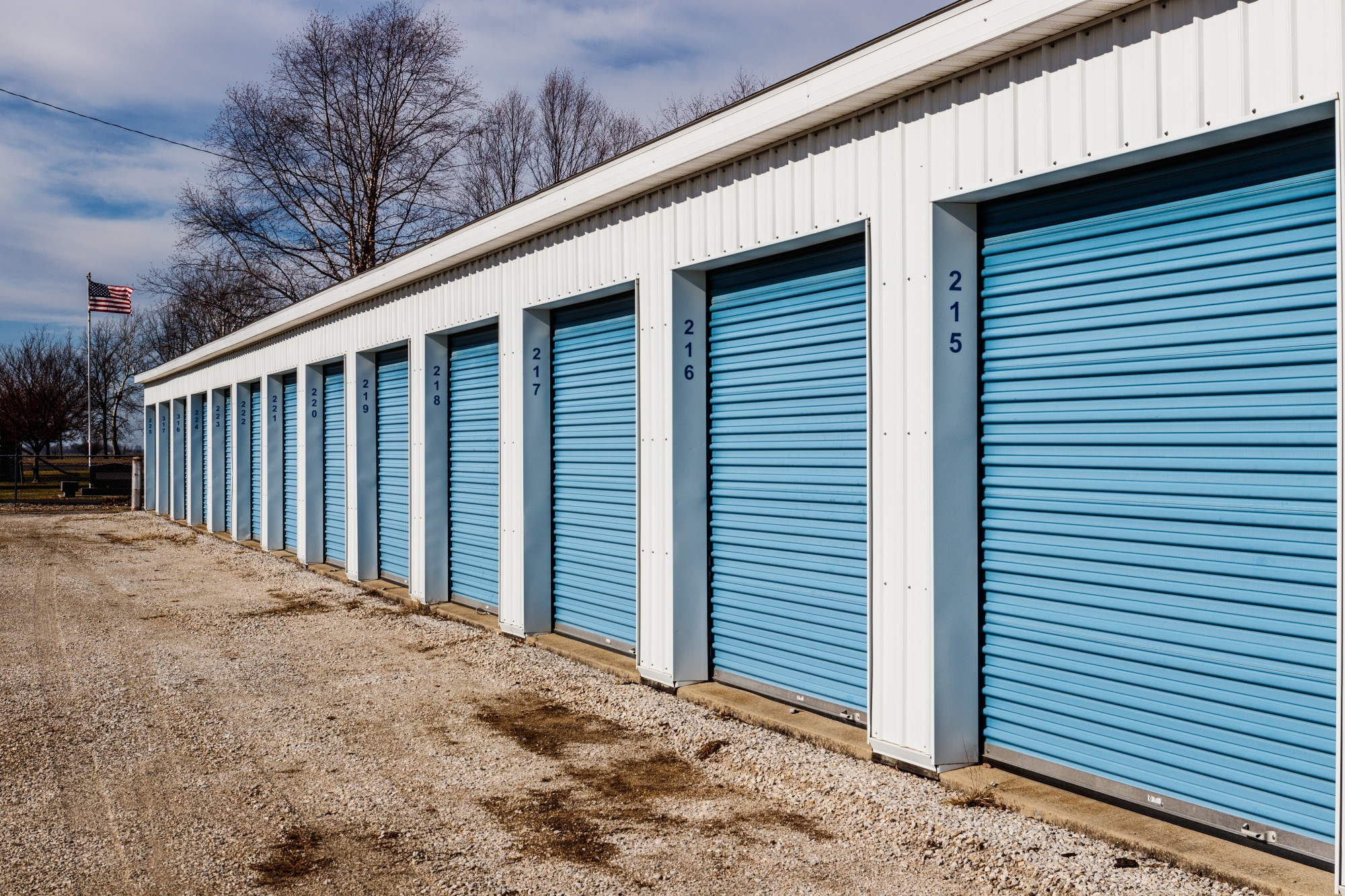Are you interested in purchasing a shipping container home for your next dwelling place?
Have you wondered if downsizing into one of these more economical units would make sense for you?
This year, shipping container homes have been taking the market by storm.
Thousands of new shipping container homes have popped up recently as homeowners have realized their value and minimalist aesthetic.
In this article, we will walk you through everything you need to know if you are considering purchasing a shipping container home. Read on and you will determine if building one of these units makes sense for your long-term needs.
What Is a Shipping Container Home?
A shipping container home is a dwelling unit made out of one or more sets of shipping containers. Because these modular units can be stacked together, the resulting structures can be very diverse and creative. It is possible to create a multilevel residence with complex interiors and external design.
Many of the most complex shipping container homes have been constructed in Jenga-style fashion. They can be stacked together at perpendicular angles to create a beautiful and architecturally complex structure.
Homeowners who wish to purchase a shipping container new will likely have to do so from manufacturers in China. Chinese companies produce more than 4/5 of the world's overall steel shipping containers.
There are different certifications for the design of the shipping containers that homeowners will want to pay attention to. Certain shipping containers are approved to be shipped overseas, while others have more stringent certifications that ensure they are waterproof and windproof.
You may also find a shipping container that is used and described as "one trip." This is usually a good value container home that has retained its structure with a limited shipping history.
If a structure is described as "as is," homeowners should avoid this. This is because the shipping container has been used to transport dangerous chemicals or goods previously and may not be safe for dwelling inside of it.
Are Shipping Container Homes Faster to Build?
It is very likely that building a shipping container home will be faster to build than a traditional house. Simple designs can be put together in just a few days or just a few weeks. This ultimately depends on how much finishing work is required by the design.
However, normal construction delays will still apply to shipping container homes, and a more complex design may take several months.
If you are hoping to build a shipping container home quickly, it is best to look for a company that builds or fabricates their shipping container homes on site before sending them to you. These are prefab-style shipping container homes that tend to be smaller but more economical.
How Much Do Shipping Container Homes Cost?
Shipping container homes will range considerably in terms of their cost according to size. As a broad range, the overall cost can vary between approximately $10,000-$35,000. However, several plans for larger homes can be up to $200,000.
The primary consideration is what your desired building materials will be, as well as the amenities you wish to include in your home. The more features and options you desire, the more expensive the home will be.
You also need to factor in the cost for the land you want to build the container along. Because a container home will remain in one place, you will need to own the land you want to use to build on.
Recent estimates of land costs place an acre of farmland between three and $4000. However this is simply an estimate, and an acre of land closer to a metro city can cost significantly more. It is important to remember the land cost because it can form a large portion of your overall budget.
Types of Shipping Container Homes
Three of the most popular types of shipping container homes are standard homes, high cube homes, and refrigerated homes.
Standard or general-purpose homes usually come in 8 x10, 8x20, or 8x40 foot sizes. Typically most standard containers will be 8.6 feet tall.
If you're going to use the smallest container, you will have to remember that you have less than 100 ft.² of space. However, you can stack multiple containers together to increase headroom, or adjacent to each other to create more horizontal space.
High cube shipping containers are an extra foot taller. Otherwise, they come in the same types of dimensions. A lot of homeowners feel that having the extra foot makes a big difference in building a shipping container home.
It also makes a big difference in terms of home insulation. However, the major drawback of a high cube container is that it is significantly more expensive. Certain high cube containers will cost 1.5 times as much as a standard container.
The refrigerated container is also known as a reefer container. The reason is that these containers are used to transport frozen meat and other perishables.
These containers work well because they are insulated from the outset.
The problem with refrigerated containers is that there are other associated challenges; these include increased cost, regular maintenance, and a unique flooring system.
Are Shipping Container Homes Actually Cheaper?
In most cases, shipping container homes will be a more cost-effective option.
However, the cost can add up quickly. You will need to review a full plan for your home with a contractor to ensure that you are making a sound financial decision.
It may be the case that you could obtain more for your money by purchasing or renting a standard home. However, more often than not you will find that shipping container homes provide amazing value to you as a homeowner.
What States Allow Shipping Container Homes?
Not every state is going to be container home friendly. Regulations do differ between states, and also between cities and municipalities. Before planning for a shipping container home, you should contact your local building authority to determine whether regulations will allow for your build.
Certain states have expressly allowed shipping container homes. These states include Texas, Alaska, California, Louisiana, Oregon, Tennessee, and Missouri. You can also contact the International Code Council to define more information.
What Are the Advantages of Shipping Containers?
Shipping container homes have many tremendous advantages over standard homes. For one, they can be much more cost-effective, with some houses priced as low as $10,000.
They are very easy to construct using modular homes using 20 and 40-foot containers. Multiple containers can stack together to increase space.
Shipping container homes are also very durable. They can withstand inclement weather conditions much better than typical housing.
Shipping container homes can also be mobile if desired. Shipping transportation companies that can relocate your container home anywhere in the world. You can even use our moving cost estimator to get an idea of how much it would cost to move your container home.
What Are the Disadvantages of Shipping Containers?
Shipping container homes do have several disadvantages, however.
It can be very difficult to find a building permit in your region. As discussed, many states do not allow for shipping container homes in their building code legislation. However, several of the larger states in the US do have dedicated regulations in place.
You will need to contact your local building authority to ensure that you are able to build your dream home on the property you have.
Despite being small, shipping containers are not always as eco-friendly as other homes.
Building a shipping container home is a good way to recycle an old container. However, shipping containers are often bought new for longevity.
Used containers can suffer damage during transportation. They can also expose workers or tenants to previous chemical spills within the container.
Electrical and Plumbing
It can be challenging to create an electrical system for appliances within your shipping container home. You will need to find a reliable and licensed electrician who is able to build a custom electrical setup for your home.
You will also likely need to find a plumber willing and able to build a new plumbing system, especially if you want to connect to the local sewage system.
Finally, over time your building may need reinforcement. Source containers use steel that is durable.
However certain modifications to shipping container homes can reduce their structural integrity. If you want to cut holes into the sidewalls for windows, for example, the building may become less stable over time.
What Is the Lifespan of a Shipping Container Home?
There will be variability in terms of the lifespan and longevity of your shipping container home. The primary driver of this longevity is the type of foundation and land on which the construct is built.
In general, a shipping container home built from used materials will last about 15 years. A new shipping container home should last approximately 25 years or more.
Are Shipping Container Homes Safe?
One of the most important factors that homeowners who are considering a shipping container need to consider is safety.
If you are purchasing a used shipping container to use as a base, you do need to consider whether or not chemicals have been used inside of it. The two primary ways chemicals will be used in containers are to clean floors and as paint on the inside walls.
Pesticides may remain on the container's wooden floors. The paint coat may include dangerous chemicals such as chromate and phosphorus.
However, if you are purchasing a shipping container new and direct from the manufacturer, you can communicate to them not to treat the floors or coat the sidewalls with hazardous paint. This will avoid the concern of chemicals altogether.
Security
You might also consider whether or not shipping container homes have enough stability and security for your needs. More than likely, a shipping container home will be even more stable than a standard house. This is because shipping container design can withstand extreme inclement weather, including hurricanes.
Similarly, shipping containers are impenetrable boxes for storing and securing goods. It will be very challenging for any criminal to access the interior of your home without breaching an entryway.
You may want to make your shipping container home more secure because you are intending to place it in a remote location. Simply reducing the number of modifications to the structure should be sufficient.
What Is the Standard Size of a Shipping Container Home?
The standard size of a shipping container home is typically 8x20 ft. However, sizes and structures can be quite diverse. You may also find 8x20 or 8x40 designs.
Once again, you will be able to stack multiple containers together with relative ease. This will increase your overall living space should you desire a larger home.
How Long Does a Shipping Container House Last?
A used shipping container house should last you for 15 years without significant or major maintenance. A shipping container home bought new from the manufacturer would last approximately 25 years or more in most circumstances.
If you want your shipping container to last, build on the right ground. The area you choose to build on makes a big difference in the overall strength of the building.
Are Shipping Container Homes Right For You?
As you can see, shipping container homes can be a great economical choice for the right person. There are many considerations you will need to think about before going all in.
You'll need to consider your budget and your willingness to accommodate the disadvantages. If you live in a remote region where there is easy access to land, a shipping container home can be a smart decision with great value.
If you want to learn more about shipping container homes or transport options, please contact us today!



